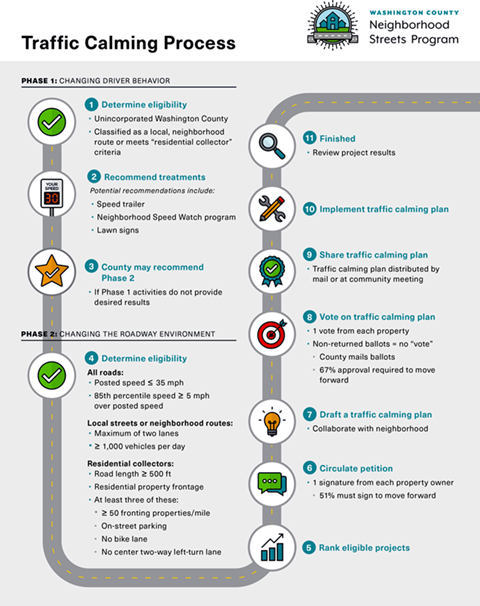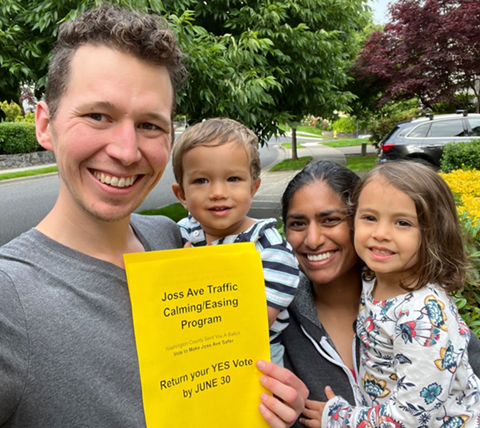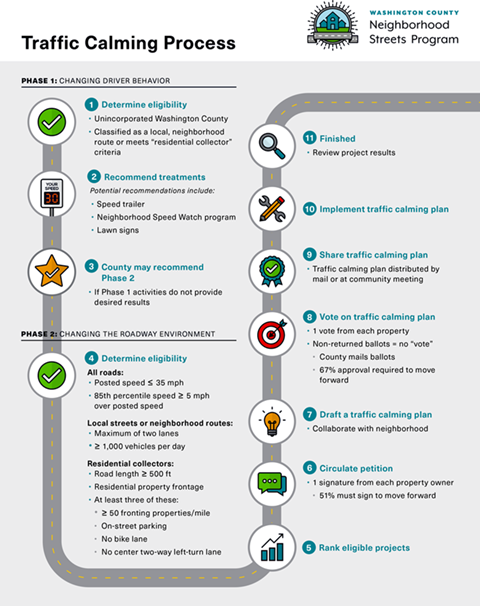Neighborhood Streets Program: A county program needing reform

By Brandon Phillips
Urban unincorporated Washington County—for example Aloha, Bethany and Cedar Mill—are expanding rapidly. And for many neighborhoods that can mean streets suddenly change from being local roads to major traffic collectors. The result is often an increase in speeding and traffic accidents. It makes other road users, like cyclists and pedestrians, feel unsafe.

In my neighborhood in North Bethany, Joss/Brugger Avenue was intended to be a neighborhood street but, due to delayed development of new larger streets around us, Joss has become a permanent traffic collector. Since Springville Elementary is on Joss the high speeds impact not only neighbors but kids going to school. We have had two accidents on Joss/Brugger in the last six months alone.
Washington County offers a program to help neighbors come together and implement traffic calming measures to lower speeds closer to the legal limits and increase safety. The Neighborhood Streets Program (NSP) states: Our Neighborhood Streets Program (NSP) helps improve the quality of life in urban neighborhoods outside cities by reducing speeding and cut-through traffic.
The program requires a heavy time investment from both the county and organizers in the neighborhood: with all 11 steps taking a year or two to navigate including community meetings, plan creation, and measurements from speed trailers.

However, near the end, at step eight, there is a hefty hurdle: a 67% Yes vote of property owners along the affected streets with any unreturned ballots counted as No. In election-speak the County requires a 67% turnout. Yes, you read correctly, this County traffic easing program requires a ⅔ majority vote to fix safety and quality-of-life problems on our streets.
Worse, when my neighborhood tried to navigate this program for Joss Avenue, we experienced problems with the ballot design that caused 7% of our ballots to be rejected. And Staff’s slow communication further introduced hurdles to our ability to canvas and get out the vote. And yet, despite the hurdles, we still managed a 52% turnout and 100% of those returned ballots were a Yes vote. But a 52% turnout means we failed the program criteria of a 67% turnout.
For a sense of how amazing a 52% paper ballot turnout is: the most recent Countywide primary election in May only had a 37% turnout!
It’s 2022 and our County is expanding rapidly. Mistakes have been made in planning our roads but it’s possible to mitigate them. However, if the county wants to rely on the Neighborhood Streets Program to improve issues, the program clearly needs improvement.
Fortunately, Staff have indicated that they are looking at improvements to address some of the problems we encountered. And I hope to learn more in the coming month or two.
If you have questions about my experience you can contact me: brandon@ifup.org





